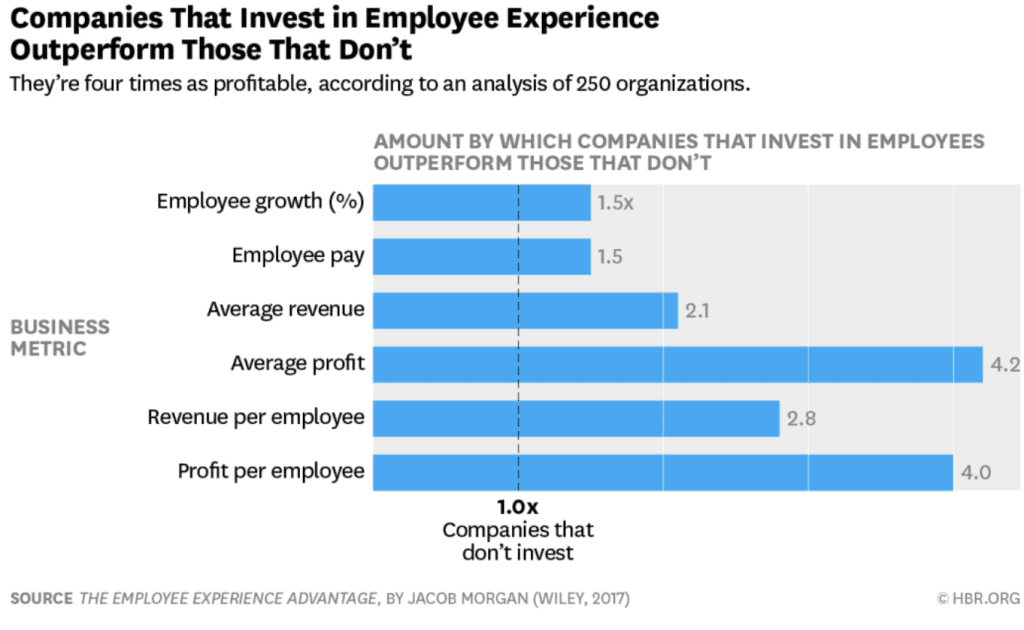As we start the year with a cautious, but more positive outlook on the pandemic than in January 2021, businesses can start to contemplate a world beyond mass restrictions, lockdowns, and purely virtual interactions. But what will this look like? Will we slot back into pre-pandemic ways? Or has the landscape changed forever?
One thing for certain is that customer expectations have changed. The trend for a more personalised and meaningful experience started pre-pandemic, but what Covid has done is supercharge the acceleration across mass industries. People will increasingly be inclined to seek out brands that make them feel special or provide added emotional connections.
In a similar vein, businesses can no longer hide poor service behind Covid. Consumers have seen many businesses adapt and flourish through Covid driven alterations - proving it not only possible to deliver the same standard, but in many circumstances, improved services during Covid times.
Employee experience will also be more influential than ever this year. It’s likely going to be tough with higher levels of staff absence due to isolation periods and your team could feel overwhelmed. As their experience directly translates to your customer experience, treating your team well is vital, including asking regularly how they are doing and then acting on the feedback.
By putting CX at the top of your Boardroom agenda, you can give your business the best chance of succeeding, and growing, in what we hope will be the year of post-pandemic.
22 things to consider in 2022…
1. Numerous studies globally and our own research confirms that those with above average customer experiences outperform others financially.
2. It is time to stop using Covid as an excuse for poor service. It is time to review your customer journey through the customers eyes and deliver a service that represents your business in a way you can be proud of.
3. Understand your customers 'WHY’, this will help drive greater loyalty, lower churn rates and increase revenues, because you’ve provided your customers with what they want, when they need it, and how they expect it.
4. If you don't measure it, you can't improve it.
5. Gathering immediate feedback enables you to be quicker to adjust to your customers’ needs and wants – making informed choices rather than guessing will increase retention.
6. If you don't take care of your customers, someone else will.
7. The deepest principle of human nature is the craving to feel appreciated. Never underestimate how important it is to communicate positively and regularly to your team members and your customers and show your appreciation.
8. Gaining employee feedback is crucial to making sure that your most important customer is listened to, as they are every business’ most valuable asset for creating and delivering the best CX.
9. How your team treat your customers, reflects how you treat your team.
10. It isn't what you say, or often what you do; it is how you make someone feel that they will never forget.
11. How do you keep doing the things that customers love if you don't know what those things are, and how do you fix the things that don't work if you don't know they’re not working? Measuring CX helps shine a light on these blind-spots.
12. All marketplaces are crowded and very few businesses sell anything that is truly unique. Do you know why your customers choose you? Do you know why some of your competitors customers chose them over you? Benchmarking your CX against your competition will answer these questions for you and provide valuable insights into how you can grow your business.
13. Before pouring more water into your bucket, it makes sense to fix any holes at the bottom! What causes your customers to leave you and try your competitors? How many new customers does your business have to get to replace the ones you've lost? Having a great customer retention strategy supports your bottom line and delivers the maximum amount of return on any marketing strategy, adding genuine customer growth and not just customer replacement.
14. Delivering an amazing CX, in 3 words: Product, Process & People. Focus energy, investment & time on each, and you will be a leading player in your sector.
15. Every customer interaction with your business is crucial. When answering a call, replying to an email, or speaking to a customer face to face. If you want to deliver fantastic CX, it's vital the team believe in the business, the leaders, value each other and the customers they deal with each day.
16. It's the simplest of things, like using your manners and having a smile on your face, that make the biggest difference.
17. Does your out of office message represent you well? Always check your spelling, the dates you are away and ensure it has the right tone - as importantly, check it is turned on and off at the right time as that first impression counts!
18. A great customer experience is when it is easy, personalised, memorable and they never have to ask you for anything.
19. Don't invest in a great external marketing campaign that will bring more customers to you, until you have invested in a joined-up customer experience strategy that enables your team to meet and exceed your customers’ expectations.
20. Put simply: Your customers may not remember what you said or indeed what you did, but they will remember how you made them feel.
21. You cannot not communicate! Whether you are in regular contact with your customers or rarely interact with them, a message is being sent, loud and clear! Take time to review your communications.
22. Ask for feedback.*77% of customers favour businesses that request feedback (*Microsoft Global State of Customer Service 2015)







